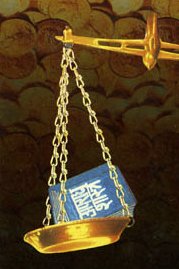Jaladurga, Jala-durga: 5 definitions
Introduction:
Jaladurga means something in Hinduism, Sanskrit, the history of ancient India. If you want to know the exact meaning, history, etymology or English translation of this term then check out the descriptions on this page. Add your comment or reference to a book if you want to contribute to this summary article.
In Hinduism
Dharmashastra (religious law)
Source: Google Books: Manusmṛti with the ManubhāṣyaThe Jaladurga (जलदुर्ग) consists of that place which is surrounded by swift, and unfordable streams of water. (See the Manubhāṣya verse 7.70)

Dharmashastra (धर्मशास्त्र, dharmaśāstra) contains the instructions (shastra) regarding religious conduct of livelihood (dharma), ceremonies, jurisprudence (study of law) and more. It is categorized as smriti, an important and authoritative selection of books dealing with the Hindu lifestyle.
Arthashastra (politics and welfare)
Source: Shodhganga: Kakati Ganapatideva and his times (artha)Jaladurga (जलदुर्ग) refers to forts surrounded by water, and represents one of the four kinds of forts (durga) specified in the Nītīsara. All these forts to which ever category belong must have special attālakas (rooms) over the gopuras (getes) fitted with sundry wooden contrivances (machines) guarded by warriors adepts in military exercises and the use of sundry missiles and weapons of warfare and well stocked with money and grain.

Arthashastra (अर्थशास्त्र, arthaśāstra) literature concerns itself with the teachings (shastra) of economic prosperity (artha) statecraft, politics and military tactics. The term arthashastra refers to both the name of these scientific teachings, as well as the name of a Sanskrit work included in such literature. This book was written (3rd century BCE) by by Kautilya, who flourished in the 4th century BCE.
India history and geography
Source: Cologne Digital Sanskrit Dictionaries: Indian Epigraphical GlossaryJala-durga.—(ASLV), a fort surrounded by water. Note: jala-durga is defined in the “Indian epigraphical glossary” as it can be found on ancient inscriptions commonly written in Sanskrit, Prakrit or Dravidian languages.

The history of India traces the identification of countries, villages, towns and other regions of India, as well as mythology, zoology, royal dynasties, rulers, tribes, local festivities and traditions and regional languages. Ancient India enjoyed religious freedom and encourages the path of Dharma, a concept common to Buddhism, Hinduism, and Jainism.
Languages of India and abroad
Kannada-English dictionary
Source: Alar: Kannada-English corpusJaladurga (ಜಲದುರ್ಗ):—[noun] a fortification surrounded by water.
--- OR ---
Jaḷadurga (ಜಳದುರ್ಗ):—[noun] a fortification surrounded by water.
Kannada is a Dravidian language (as opposed to the Indo-European language family) mainly spoken in the southwestern region of India.
Nepali dictionary
Source: unoes: Nepali-English DictionaryJaladurga (जलदुर्ग):—n. a safe place surrounded by moat, sea, river, etc.;
Nepali is the primary language of the Nepalese people counting almost 20 million native speakers. The country of Nepal is situated in the Himalaya mountain range to the north of India.
See also (Relevant definitions)
Query error!
Relevant text
Search found 11 books and stories containing Jaladurga, Jala-durga, Jaḷa-durga, Jaḷadurga; (plurals include: Jaladurgas, durgas, Jaḷadurgas). You can also click to the full overview containing English textual excerpts. Below are direct links for the most relevant articles:
Architectural data in the Puranas (by Sharda Devi)
Classification of Forts < [Chapter 4 - Forts]
Manasollasa (study of Arts and Sciences) (by Mahadev Narayanrao Joshi)
2.6. Element of the Fort and Army (Durga and Bala) < [Chapter 2 - Treatment of Political Theory and State Administration]
Matsya Purana (critical study) (by Kushal Kalita)
Part 2 - Fort (durga) architecture in the Matsyapurāṇa < [Chapter 7 - Art and Architecture in the Matsyapurāṇa]
Manusmriti with the Commentary of Medhatithi (by Ganganatha Jha)
Verse 7.71-72 < [Section VI - Fortification (durga)]
Verse 7.70 < [Section VI - Fortification (durga)]
Shukra Niti by Shukracharya (by Benoy Kumar Sarkar)
Studies in Indian Literary History (by P. K. God)
17. The Akashabhairava-Kalpa < [Volume 2 (1954)]